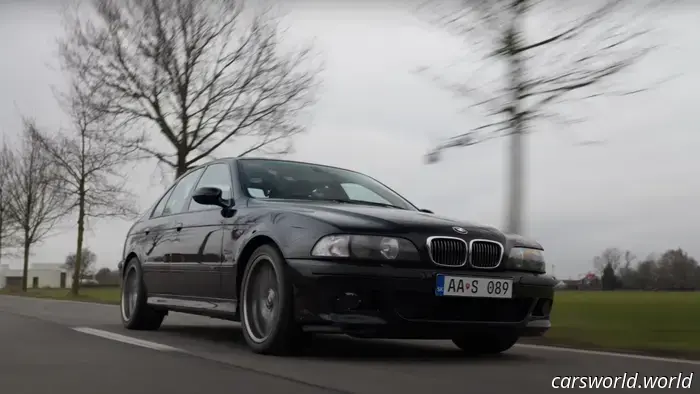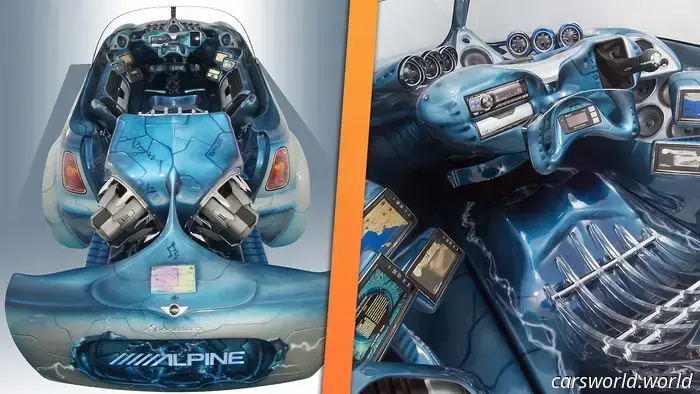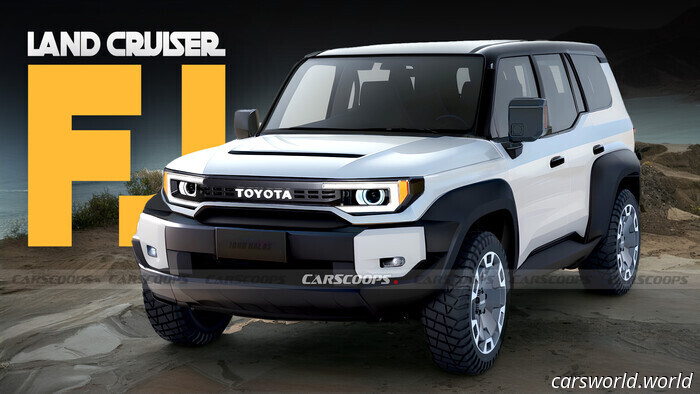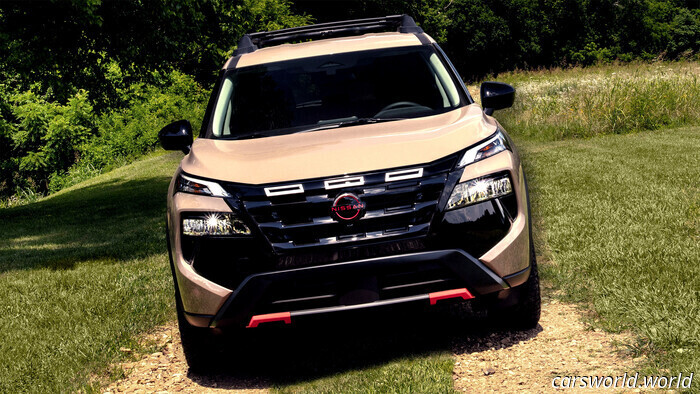
This E39 BMW M5 conceals a long-forgotten Volkswagen W10 engine.
Drive Tribe
In 2023, we shared a story regarding what many considered to be the last W10 engine produced by Volkswagen in the early 2000s. This engine was with a German VW mechanic who had been informed that the other two engines created were destroyed. Fast-forward to 2025, and we have finally located them. Both engines are part of a private collection, with one tucked away in a test mule based on the E39-generation BMW M5.
The W10 project was initiated by Ferdinand Piëch, who chaired the Volkswagen Group until 2015. Under his leadership, the W range of engines was developed, which included the W8 that featured in the Passat 4Motion, the W12 found in various Volkswagen, Audi, and Bentley models, and the W16 that powered the Bugatti Veyron. Additionally, two more W engines were created but never entered mass production: the W10, intended for a sports sedan, and the W18, which was initially planned for the Veyron before the engineers opted for the W16.
Details regarding the W10-powered sports sedan have faded into history, but a recent Drive Tribe video suggests there was nothing comparable in the Volkswagen Group’s lineup. This made it challenging to test the engine in real-world scenarios, prompting Volkswagen to acquire an E39-gen M5 as a test mule. Piëch’s team selected the M5 for multiple reasons. One reason was that the engine bay had sufficient space for the W10, which was more compact than a V10 thanks to its W layout. Another reason was that the M5 was designed for excellent handling, eliminating the need for significant chassis modifications. Plus, its understated design played a role; to the casual observer, the E39-generation M5 resembles a typical 5 Series sedan. The six-speed manual transmission was also a key factor.
Volkswagen reportedly invested around €2 million in constructing the unique W10-powered M5, and a glance under the hood reveals exactly where the funds were allocated. This is a remarkably experimental build, yet the quality of workmanship is exceptional. There are no loose or dangling wires, no haphazardly assembled parts held together with tape, and everything appears to be finished correctly. Volkswagen even crafted a carbon fiber airbox for the engine.
Nevertheless, it remains a prototype. It lacks any driving assistance features, with VW even omitting ABS and traction control. The instrument cluster resembles that of a race car, with several additional gauges located on the center stack, and engineers set up a standalone ECU to control the drivetrain. The cabin is permeated with fuel and exhaust fumes, yet this did not deter Piëch from reportedly driving the M5 daily for some time.
He likely enjoyed every moment!
Linked to a six-speed manual, the W10 generates 480 horsepower and 436 lb-ft of torque at the wheels. For comparison, a stock E39-gen M5 is equipped with a 4.9-liter V8 engine that delivers 394 hp and 369 lb-ft of torque at the crank. While the W10 is probably heavier, that still represents a significant increase in power. It also has an incredible sound. It’s unfortunate that this engine never reached the end of a production line.
The one-of-a-kind W10-powered M5 is up for sale, and it is priced similarly to a new Ferrari Purosangue, according to Drive Tribe. We estimate that acquiring it will cost around $500,000. Is it worth that amount? It depends on your viewpoint; there’s no definitive answer, but we’d argue that half a million dollars seems quite reasonable considering the prototype's rarity and uniqueness.
Now, we’re left wondering: Are there other W10 engines still out there? And what became of the one we wrote about in 2023?
Got tips? Send them to [email protected]


Altri articoli
 Il concetto BMW M2 Dakar è così buono che fa male che è solo uno scherzo del pesce d'aprile / Carscoops
Sospensioni sollevate, paraurti rimodellato per un migliore angolo di avvicinamento e un cestello del tetto pieno di pezzi di ricambio si adattano perfettamente alla vettura M più piccola
Il concetto BMW M2 Dakar è così buono che fa male che è solo uno scherzo del pesce d'aprile / Carscoops
Sospensioni sollevate, paraurti rimodellato per un migliore angolo di avvicinamento e un cestello del tetto pieno di pezzi di ricambio si adattano perfettamente alla vettura M più piccola
 Questo Mini Cooper trasformato in una pelle Winamp rotolamento è l'ultimo 2004 Costruire
Questo display di apparecchiature audio alpine rolling è l'essenza distillata del design dei primi anni 2000, nel bene e nel male.
Questo Mini Cooper trasformato in una pelle Winamp rotolamento è l'ultimo 2004 Costruire
Questo display di apparecchiature audio alpine rolling è l'essenza distillata del design dei primi anni 2000, nel bene e nel male.
 Mazda RX - 7 Set in fiamme da carica di mantenimento della batteria agli ioni di litio nel bagagliaio
Le batterie agli ioni di litio possono essere sovraccaricate e, quando ciò accade, danneggiano le cellule e possono innescare un incendio. Potrebbe essere quello che e ' successo qui.
Mazda RX - 7 Set in fiamme da carica di mantenimento della batteria agli ioni di litio nel bagagliaio
Le batterie agli ioni di litio possono essere sovraccaricate e, quando ciò accade, danneggiano le cellule e possono innescare un incendio. Potrebbe essere quello che e ' successo qui.
 Il debutto del Baby Land Cruiser FJ di Toyota rinviato al 2026 / Carscoops
Il nuovo compact Land Cruiser FJ dovrebbe debuttare nella prima metà del 2026, con un lancio globale a seguire, anche in Nord America
Il debutto del Baby Land Cruiser FJ di Toyota rinviato al 2026 / Carscoops
Il nuovo compact Land Cruiser FJ dovrebbe debuttare nella prima metà del 2026, con un lancio globale a seguire, anche in Nord America
 Motoslitta attraverso Yellowstone è difficile, ma vale la pena di congelamento per
Ho guidato motoslitte Ski-Doo che vanno da 60 a 180 CV per due giorni interi, in terreni che variano da strade piatte ghiacciate a 7 piedi di neve a 9.000 piedi di altitudine. Ero esausta.
Motoslitta attraverso Yellowstone è difficile, ma vale la pena di congelamento per
Ho guidato motoslitte Ski-Doo che vanno da 60 a 180 CV per due giorni interi, in terreni che variano da strade piatte ghiacciate a 7 piedi di neve a 9.000 piedi di altitudine. Ero esausta.
 Nissan lo ottiene, taglia i prezzi 2025 Rogue e Pathfinder mentre le tariffe inviano i rivali più in alto / Carscoops
Prenderemo qualsiasi riduzione di prezzo in un mercato in cui gli MSRP di solito si muovono solo in un modo
Nissan lo ottiene, taglia i prezzi 2025 Rogue e Pathfinder mentre le tariffe inviano i rivali più in alto / Carscoops
Prenderemo qualsiasi riduzione di prezzo in un mercato in cui gli MSRP di solito si muovono solo in un modo
This E39 BMW M5 conceals a long-forgotten Volkswagen W10 engine.
The experimental 10-cylinder engine was created for a sport sedan, and it was thought to have been destroyed.
